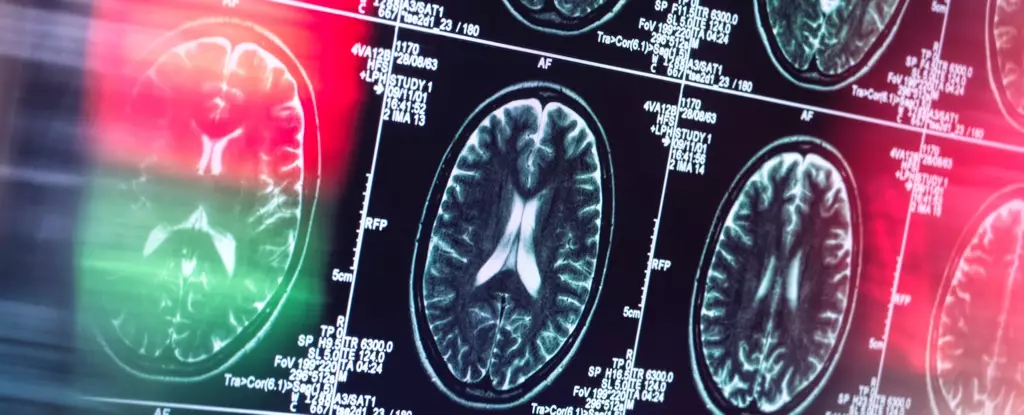The quest for an effective treatment for Alzheimer’s disease has become a battleground marked by conflicting studies, heated debates, and profound questions regarding the authenticity of initial findings. The landscape of Alzheimer’s research took a sharp turn in July 2022 when **Science** magazine uncovered allegations that a pivotal 2006 study in the esteemed journal **Nature** — which suggested that the accumulation of beta-amyloid proteins is the primary cause of Alzheimer’s — might have been built on manipulated data. Such revelations not only cast doubts on decades of research but also raise concerns about the integrity of scientific inquiry in this field.
Adding to the turmoil, the FDA approved aducanumab, a therapeutic antibody that targets beta-amyloid, in June 2021, despite the fact that the evidence supporting its efficacy was inconsistent and insufficient. This controversial approval polarized health professionals; some advocated for its use as a glimmer of hope for patients, while others argued that the lack of robust data should have precluded its market entry. As the scientific community grapples with these controversies, a pressing question emerges: Why has the pursuit of an effective remedy for such a critical neurodegenerative disease been fraught with obstacles?
For years, the scientific endeavor related to Alzheimer’s has been disproportionately centered on beta-amyloid clumps while sidelining other potential avenues. This narrow focus has arguably led to mental stagnation — an intellectual impasse that has hindered advancements in meaningful therapies or drugs. The urgency for an innovative perspective is palpable amidst a global population increasingly burdened by dementia, with more than 50 million individuals suffering from its debilitating effects.
Recent insights suggest that researchers may need to expand their view of Alzheimer’s disease beyond the confines of abnormal protein accumulations. A fresh approach might involve a re-evaluation of the complex interplay of systems within the brain, particularly the immune mechanisms that govern brain health. This line of thought leads to an emerging hypothesis from the Krembil Brain Institute in Toronto, proposing that Alzheimer’s may not be solely localized to the brain in terms of pathology; rather, the disease could be linked to dysfunctions within the brain’s immune system itself.
For decades, the immune system has been viewed primarily as a defensive mechanism against external threats like infections. However, it also plays a crucial role in maintaining internal homeostasis, repairing damaged tissues, and regulating various physiological processes. The hypothesis that some forms of Alzheimer’s could stem from an autoimmune-like response opens new avenues for research and treatment.
Beta-amyloid, once deemed a toxic invader, may actually be a protective agent functioning in tandem with the brain’s immune response. Yet, this response can become misguided. Drawing a parallel to how the immune system attacks the body in diseases such as rheumatoid arthritis, the misfiring of beta-amyloid could result in an detrimental autoimmune response that ultimately damages brain cells rather than protecting them. If researchers can unlock the complexities of this immune response and how it inadvertently contributes to Alzheimer’s pathology, a wealth of potential treatment vectors may open up.
Increasingly, alternative theories surrounding the origins and mechanisms of Alzheimer’s are being explored, indicating a need for a multi-faceted viewpoint. One theory posits that mitochondrial dysfunction within brain cells is a driving factor. Mitochondria serve as powerhouses within cells, and their failure can have cascading effects on neuronal health. Other researchers examine dental health, hypothesizing a connection between oral bacteria and the disease. In yet another dimension, aberrations in the management of metal ions, such as zinc and copper within the brain, have been suggested as contributing factors to the onset of Alzheimer’s.
The breadth of these theories underscores an essential truth: a singular focus on beta-amyloid may not only limit our understanding but also our ability to effectively treat this disease. Innovations often arise at the intersection of ideas, and a shift in perspective may just provide the breakthrough that Alzheimer’s research desperately needs.
Alzheimer’s remains a public health crisis with significant societal implications. Individuals living with this condition often confront an agonizing decline, losing their ability to recognize and connect with loved ones. The accelerating incidence of dementia diagnoses globally calls for immediate action. Beyond the personal suffering experienced by families, the socioeconomic burden on healthcare systems tasked with supporting increasing numbers of dementia patients is overwhelming.
A commitment to exploring novel theories and cross-disciplinary research will be key to advancing our understanding of Alzheimer’s and developing effective treatments. Encouraging innovation in this critical area can ultimately enhance the lives of millions and mitigate the impact this disease has on society. Only by embracing a spectrum of approaches can we hope to unveil the complexities of Alzheimer’s and, in doing so, pave the way for solutions that could transform the landscape of this formidable challenge.


Leave a Reply